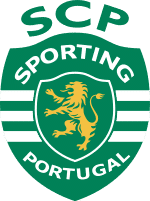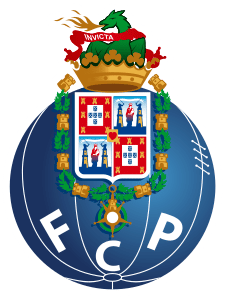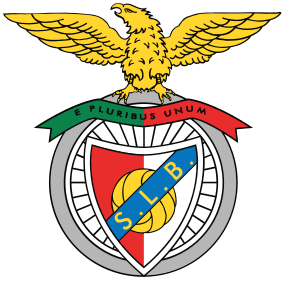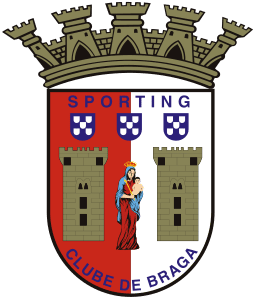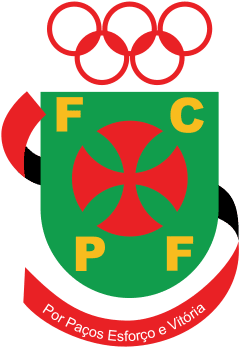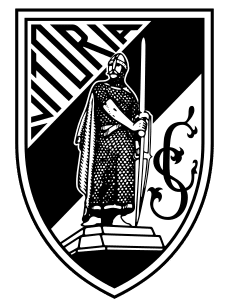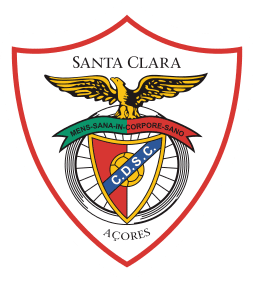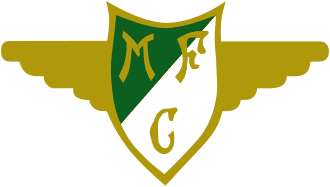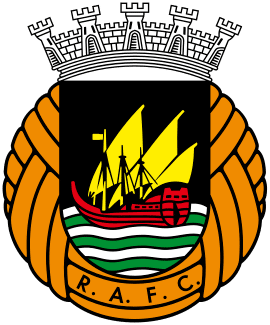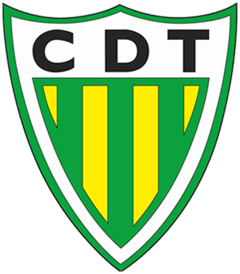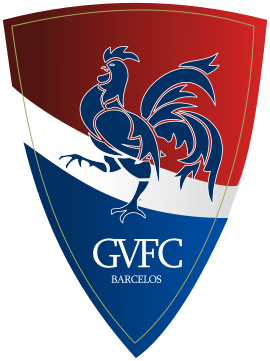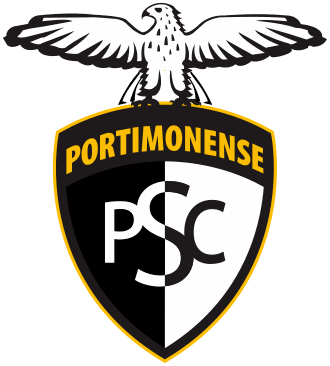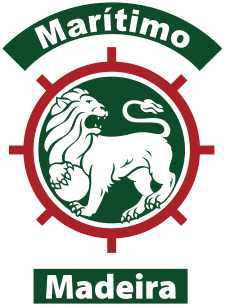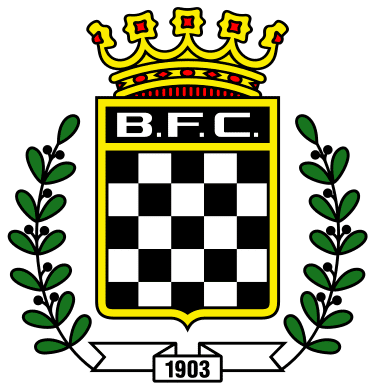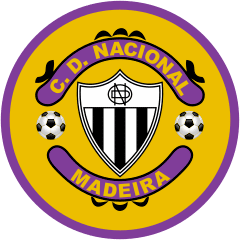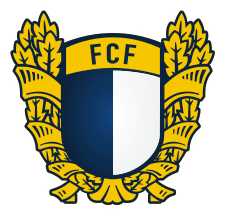Sporting CP Tryouts & Club Guide: History, Stadium, Players, and More!

Welcome!
Discover the world of soccer with fcscout.com, your go-to scout for club tryout information, club guides, player profiles, in-depth product reviews, and more. We’re dedicated to exploring and revealing the best in each domain, empowering you with knowledge to make informed choices.
Thank you for being here!
Hi, I’m Carlos! A coach, sports enthusiast, and the founder of FCScout.com.
I fell in love with the game at a very young age like many of you. I’ve been following and playing soccer for many years.
Throughout my career, I always enjoyed helping soccer players chase their dreams, which is why I started this website. I wanted to reach a larger audience outside of my local area and fcscout.com was born.
This website is a platform I will be using to update club pages on any tryouts, stadiums, players, tech, and more from clubs around the world. I also create free recruitment profiles for players looking to have that extra competitive edge when reaching out to clubs.
That’s it. That’s my pitch for you to stick around (or browse the site as you please).
This is already too much text for a “see more” drop-down button thing. If you want to reach out to me, head on over to my contact page 🙂

Sporting Clube de Portugal, otherwise known as Sporting, Sporting CP, and referred to informally as Sporting Lisbon, is a football club based in Lisbon, Portugal.
Sporting CP Youth Development System
Sporting’s youth academy system helped develop Ballon d’Or recipients Luís Figo and Cristiano Ronaldo.

In the victorious campaign of Portuguese National Team in the Euro 2016, 10 out of the 14 players who played the final against France were players “made in Sporting”. Moreover, at the 2018 FIFA World Cup Sporting CP had 14 players that came through their youth system, making it the most represented youth academy system in the tournament followed by FC Barcelona with 11.
International Sporting Academy Schools
Sporting CP are known to have one of the most reputable academies in the world, intending to take the training and work methods of Academia Sporting to young people from 4 to 15 years old, regardless of their gender, or their ability to practice the sport.
Available for boys and girls over 4 years of age.
- Access up to 3 weekly trainings
- Access to sport insurance
- Sporting equipment – (sweatshirt, shorts, socks, and backpack)
Operating since 2006, with a network of more than 50 national and international schools and with evidence given in terms of training players and coaches.

For a complete list of all schools from the official Sporting CP website, please click here.
Sporting CP – Toronto, Canada
About the school:
- Inaugurated in 2011
- More than 250 Athletes
- Over 30 Observed Athletes and 2 Recruited for Sporting Clube de Portugal teams
- Coaches Certified by Sporting Clube de Portugal
Brockton Stadium
Toronto, Ontario
Canada
Telephone Contact:
6473780104
E-mail:
toronto@eas.sporting.pt
For additional information on the Toronto Sporting CP school, please click here.
Sporting CP – Brazil

Arthur Otto Schaeffer
Ivoti
Brazil Street
Telephone Contact:
+555135633187
E-mail:
ivoti@eas.sporting.pt
For additional information on the Ivoti, Brazil, Sporting CP school, please click here.
AV. DA PEDRA BRANCA
Palhoça
Brasil
Telephone Contact:
+351 48 99634.3020
E-mail:
palhoca@eas.sporting.pt
For additional information on the Palhoça, Brazil, Sporting CP school, please click here.
AV. PATRÍCIO CALDEIRA DE ANDRADE 888
FLORIANÓPOLIS
Brazil
Contacto Telefónico:
+351 48 99695.3018
E-mail:
florianopolis@eas.sporting.pt
For additional information on the FLORIANÓPOLIS, Brazil, Sporting CP school, please click here.
Sporting CP – South Africa
Rustemburgo
Drakensberg Rd
Rustemburgo
África do Sul
Contacto Telefónico:
+27 826 474982
E-mail:
rustenburg@eas.sporting.pt
For additional information on the Rustemburgo, South Africa, Sporting CP school, please click here.
Penryn College
Nelspruit
África do Sul

Contacto Telefónico:
(+)27766527991
E-mail:
nelspruit@eas.sporting.pt
For additional information on the Nelspruit, South Africa, Sporting CP school, please click here.

Sporting CP Academy Pro Camps
Camps at the sporting gym are a unique moment in which they can show the Sporting CP training methodology for a few days. Proven success over the years both nationally and internationally.

FEATURES
- Accommodation in a double room, on a TI basis, at the Sporting Academy
- Buffet meals with a Menu to be agreed
- Training on the fields of the Sporting Academy
- Possibility of using Gym
- Room for medical assistance available
- Possibility of organizing training games with external teams (subject to additional budget)
- Visit to the Stadium + Museum (optional)
- Possibility to watch the matches of team A in Alvalade (by purchasing tickets + transfers)
WHO IS IT FOR
Travel Agencies, International Clubs
To learn more and register, please click here.
Sporting CP Academy Training Camps

FEATURES
- IT regime accommodation at Academia Sporting
- Training on the Academy grounds, with Sporting coaches
- Visit to the Stadium + Museum (optional)
- Possibility to watch the matches of team A in Alvalade (by purchasing tickets + transfers)
- Min 10 players
- It is mandatory for the Group to have 1 responsible for every 10 players
WHO IS IT FOR
Travel agencies, international schools, or clubs with training teams
To learn more and register, please click here.
Sporting CP Recruitment Trials
At the time of this writing, there is no official publishing’s on Sporting CP trials. Please come back at a later date while we monitor this club or click here to visit their official news section.
EXPLORE MORE CLUBS!
Explore more professional clubs by continent.
Sporting CP History
Sport Club de Belas was founded in June 1902 by Francisco da Ponte, Horta Gavazzo, and José Maria Gavazzo, all of whom were in their early twenties. Sporting’s original ancestor played only one game before disbanding at the end of the summer. A new football club, the Campo Grande Football Club, was created two years later, with the Gavazzo brothers, José Alvalade, and José Stromp as the founding members. José Alvalade’s grandfather, Alfredo Holtreman, was the Viscount of Alvalade, and the club’s headquarters were located in Francisco Gavazzo.

Among the club’s many activities were football, tennis, and fencing, all of which were extremely active over a period of two years. Parties and picnics were also planned by the club. Disagreements eventually broke out at a picnic on April 12, 1906. Some members claimed that the club should solely be focused on picnics and social events, while others said that the club should be focused on sports training. When José Gavazzo and Jose Alvalade and 17 other members eventually left the club, Alvalade announced that he would bring his grandfather along and that he would provide the funds necessary to start another club.
Sporting Clube de Portugal was thus established. For its inception, Sporting’s first president was the Viscount of Alvalade. We want this club to be as good as the best in Europe,” said José Alvalade on behalf of himself and his fellow co-founders. An formal name for the team came three months later, on 1 July 1906, when António Félix da Costa Jnior proposed the name Sporting Clube de Portugal.
Early years (1907–1946)
During the year 1907, Sporting played their first football match, losing 5–1 to Cruz Negra, inaugurated their first ground, known as “Stio das Mouras” (the most advanced in Portugal at the time), and played the first derby of all time against S.L. Benfica (then known as G), which was the first derby of all time between the two Lisbon rivals.
On March 31, 1922, Sporting printed their first report card, named “Boletim do Sporting” (Sporting’s Report), which laid the groundwork for the club’s official newspaper, the “Jornal do Sporting,” which still exists today.

When Sporting played their debut game in the Primeira Liga (Portuguese football’s first division), they defeated Académica de Coimbra 0–6 on January 20, 1935. The following year, in 1936, the team suffered their biggest defeat to date, falling 10-1 against Porto. Sporting, on the other hand, retaliated a year later by defeating the same team 9–1. The club won its first league championship in 1941, led by Hungarian manager József Szabó.
Golden years and fading (1947–1974)
The team’s heyday was between the 1940s and the 1950s. Fernando Peyroteo, José Travassos, Albano Pereira, Jesus Correia, and Manuel Vasques, collectively known as “The Five Violins,” were the driving force behind the project’s inception. During the eight seasons between 1947 and 1954, Sporting won seven league titles, including a previously unheard of four straight from 1950 to 1951. “The violins,” Fernando Peyroteo, is widely regarded as the best Portuguese violinist ever.
On September 4, 1955, Sporting and Partizan of Yugoslavia participated in the first-ever UEFA Champion Clubs’ Cup game. Joo Martins, a Sporting player, scored the tournament’s first goal in the 14th minute. 3–3 draw was the final result of the game. José Alvalade Stadium was inaugurated on June 10, 1956, and would serve as Sporting’s home ground until 2003.

Sporting won the UEFA Cup Winners’ Cup in 1963–64, defeating Hungarian side MTK Budapest in the final. A Portuguese team has won the UEFA Cup Winners’ Cup only once before. They qualified after beating Atalanta in the qualifying round and then defeating Cypriot club APOEL with a record-breaking 16–1 triumph during a single UEFA tournaments game. They were beaten 4-1 by Manchester United at Old Trafford in the first round, but came back to beat them 5–0 at home in the second round of the competition. Sporting defeated Lyon in the semifinals and MTK Budapest in the final to earn their first European championship. Joo Morais scored the winning goal from a corner kick. In 1974, the team made it all the way to the Cup Winners’ Cup finals before losing to East German side 1. FC Magdeburg.
First league title drought (1982–2000)
When Malcolm Allison, an Englishman, joined in 1981, he led Sporting to a domestic double in 1982 (the league title and Portuguese cup). Sporting had a long period of title drought between 1982 and 2000. Sporting fans had to wait until 1995 to see their team win a trophy after defeating Club Sport Martimo 2–0 in the 1995 Portuguese Cup final despite winning the Portuguese Super Cup by an aggregate score of 4–0. Sporting qualified for the Portuguese Super Cup the following season as a result of this victory. To make up for drawing 0-0 and drawing 2–2 at the José Alvalade and Estádio das Antas, on 30 April 1996, the two teams met in a replay in Paris. Sá Pinto scored twice and Carlos Xavier added a stoppage time penalty to help Sporting to a 3–0 victory. Sporting also made it to the Portuguese Cup Final in the 1995–96 season, but they were defeated 3–1 by Benfica.

A 7–1 win over arch-rivals Benfica at the José Alvalade Stadium on December 14, 1986, is another notable moment from this era. In 1991, Sporting limped out of the UEFA Cup after a heartbreaking loss to Internazionale in the quarterfinals. In the 1986–87 and 1994–95 UEFA Cup seasons, Barcelona and Real Madrid were both held to a draw and a defeat by Sporting Lisbon, respectively.
The turn of the millennium (2000–2002)
This ended an 18-year wait for a league title for Sporting, which was headed by manager Augusto Inácio (a former Sporting player, who succeeded Giuseppe Materazzi at the beginning of the year). Sporting won the 2000 Super Cup the following season but finished third in the league. Sporting Lisbon won their 18th league title, the Portuguese Cup, and the 2002 Portuguese Super Cup in the 2001–02 season, managed by coach László Bölöni. The club’s training facility in Alcochete, 30 kilometers east of Lisbon, was officially launched on June 21st, 2002.
Second league title drought (2002–2009)
Since 2002, Sporting have not won the Primeira Liga. Sporting Lisbon, under the leadership of José Peseiro, won the Primeira Liga in the 2004–05 season and had a fantastic run in the UEFA Cup. Even though they had already been eliminated from Taça de Portugal on January 26, 2005, when Sporting lost 7–6 on penalties to Benfica, they still had a chance to win any title that season.
It was still Sporting’s second European final on May 5, when they defeated Dutch side AZ Alkmaar 1-0 in the UEFA Cup semi-finals. Sporting Lisbon lost its penultimate Primeira Liga match against Benfica on May 14 and was relegated to third place. The team finished third in the Primeira Liga at the end of the 2004–05 season. Finally, on 18 May 2005, Sporting Lisbon lost the UEFA Cup Final 1–3 to Russian side CSKA Moscow, despite leading 1-0 at the break.

Sporting Lisbon won the Portuguese Cup twice in a row in 2007 and 2008. (led by coach Paulo Bento). Athletic Bilbao knocked the team out of the 2011–12 Europa League semi-finals, denying them a second European final appearance. Sporting Lisbon also made it to the UEFA Champions League knockout stages for the first time in the 2008–09 season, but were thrashed 12–1 by Bayern Munich. In terms of the club’s history, this is one of the lowest points.
2013–Present
Sporting Lisbon qualified for the Champions League for the first time in five years thanks to Leonardo Jardim’s leadership in the 2013–14 season, when they finished second in the league. Sporting clinched the Portuguese Cup for the 16th time in a row in 2014–15. Lisbon’s team, captained by Marco Silva, faced Braga in the final and lost 0–2 at halftime after Cédric Soares was sent off for a second bookable offense. When Islam Slimani scored the 1–2 in the 83rd minute, it gave the crowd a glimmer of hope. Fredy Montero scored a stoppage-time equalizer to force overtime.
In the end, it came down to penalties, and Sporting escaped with a 3–1 victory. The fans invaded the pitch at Estádio José Alvalade to celebrate their team’s first trophy in seven years. Jorge Jesus signed a three-year contract with Sporting Lisbon in June 2015 after Benfica decided not to renew his contract as coach. On July 1, he was introduced as the club’s new manager and the animosity between the two Lisbon clubs was ratcheted up a notch.
When Sporting defeated defending champions Benfica in the Portuguese Super Cup final, it was the ninth time Sporting had won the trophy under Jesus’ leadership. Although Sporting made a promising start, they failed to win any other trophies, ending second in the Primeira Liga with 86 points, just two points behind Benfica.

Sporting’s first Taça da Liga came in a penalty shootout against Vitória de Setbal after a trophy-less season. Some players and coaches at Sporting’s training field were attacked by about 50 of the club’s supporters on May 15th, days after they finished third in the league. Sporting was knocked out of the Portuguese Cup final by Aves just five days later. Bruno de Carvalho was fired by the club’s members after a general assembly on June 23 following the rescindment of nine players.
Colors and Crest
Crest
As of 1 July 2006, Sporting had six crests, all of which featured the color green and the lion. It was founded on that date, 1 July 1906. In 2001, the current crest was selected as the official symbol of the university.

The club also had commemorative crests for the 50th and 100th anniversaries, respectively. This was utilized by fans as a symbol rather than a piece of gear, and was not worn on the pitch.
Colors
Sporting Clube de Portugal’s history has been marked by a deep commitment to an ideal reflected by the colors green and white, the rampant lion, and the attitude of effort, dedication, devotion, and the quest for glory.

Since the end of the 19th century, many things have changed in Portugal and the rest of the world, but one thing has stayed constant: For the first time in 1892, nets were incorporated into the structure of the goal, borrowed from fishing, in an effort to dispel any doubts about goals. Football is today perhaps the most universal sport and the one that mobilizes the most interest and boasts the greatest number of fans across all continents.

Sporting has become a symbol of the Portuguese, European, and transcontinental reality during the past ten decades, while still sticking to the great foundational values of sport that played such a role in the Club’s formation. The Club’s founding fathers, who, in an era of strict professionalism in sports, found spirit in the Club’s jersey, expressed their loyalty and affection for the kit, which has remained ever present and as powerful as it ever was.

When Sport Club de Belas (Sports Club of Belas), the forerunner of Sporting Clube de Portugal, was still known as Sport Club de Belas, their uniforms were white. On July 1, 1906, Sporting Clube de Portugal was founded as a result of the merger of Campo Grande Football Club and the Sporting Clube de Portugal. As a result of this, the Club used a green background and a golden lion as its logo.
Sporting CP Stadium
Sporting has had a variety of stadiums over its history. On July 4, 1907, the first one, dubbed “Stio das Mouras,” was officially opened. The first Alvalade Estádio was inaugurated in 1956. Sporting used to play at that stadium until it was dismantled in 2003.

For the UEFA Euro 2004 tournament, a new stadium, Alvalade XXI (“Estádio José Alvalade”), was constructed in Lisbon. It was unveiled on August 6, 2003, with a design by Tomás Taveira. In the first game, Manchester United was defeated 3–1. At the 2005 UEFA Cup Final, Lennart Johansson, then the UEFA president, awarded the stadium a “five-star” accreditation. A total of 50,095 people may be accommodated in the stadium.
City of Lisbon, Portugal
There are an estimated 505,526 people living inside Lisbon’s administrative boundaries, which cover an area of 100,050 square kilometers. As the 10th most populated urban region in the European Union, Lisbon’s urban area stretches beyond the city’s administrative boundaries and has a population of over 2.8 million. 3 million people call the Lisbon metropolitan area home, accounting for 27% of the population of Portugal. It is the only capital city on the Atlantic coast of mainland Europe. Lisbon is a port city on the Tagus River and the Atlantic Ocean in western Iberia. A part of its metro area known as the Portuguese Riviera forms the westernmost tip of continental Europe, culminating at Cabo da Roca in the north.

Because of its prominence in banking, commerce, media, entertainment, arts, international trade, education, and tourism, Lisbon has been ranked as an alpha-level global metropolis. In addition to Porto, Lisbon has been designated as a global city. With a burgeoning financial sector and Europe’s largest container port on the Atlantic coast, it is a major economic center on the continent. With 29 million passengers in 2018, Humberto Delgado Airport was the busiest in Portugal, 3rd in Iberia, and Europe’s 20th busiest airport. Alfa Pendular’s high-speed rail line connects the major cities of Portugal to Lisbon via the country’s road network. There were a total of 3,539,400 visitors to the city in 2018, making it the ninth most-visited city in the Mediterranean region. The Lisbon region of Portugal has the highest GDP PPP per capita in the country. Its GDP is $96.3 billion, which equates to a per-capita income of $32,434 USD. The city is ranked 40th in the globe in terms of gross profits. The Lisbon area is home to the majority of the headquarters of international firms in Portugal. In addition to being the country’s capital and the residence of the country’s head of state, it is also the country’s political center.
Geography
Location: Lisbon is located at 38°42′49.75′′N 9°8′21.79′′W, at the mouth of the Tagus River, making it Europe’s westernmost capital. In the westernmost reaches of Lisbon, you’ll find the Monsanto Forest Park, a 10-square-kilometer (4-square-mile) urban park that takes up 10% of the city’s total land area.

City boundaries, unlike most major cities, match with those of the municipality, occupying an area of 100.05 km2 (39 sq mi). The north bank of the Tagus River contains a number of officially recognized cities and municipalities that collectively make up the Greater Lisbon urban region. The Setbal Peninsula is part of the broader Lisbon metropolitan region.
Climate | Weather
There are moderate, rainy winters in Lisbon, and warm to hot and dry summers in the Mediterranean climate (Köppen: CSa). In the summer, the average temperature is 21.3 °C (70.3 °F), but at night it drops to 13.5 °C (56.3 °F). In January, the coldest month of the year, highs normally range from 10 to 18 degrees Celsius (50 to 64 degrees Fahrenheit), lows range from 3 to 13 degrees Celsius (37 to 55 degrees Fahrenheit), and the average sea temperature is 15 degrees Celsius (59 degrees Fahrenheit). August is the hottest month of the year, with highs of 25 to 32 degrees Celsius (77 to 90 degrees Fahrenheit) during the day and 14 to 20 degrees Celsius (57 to 68 degrees Fahrenheit) at night, with an average sea temperature of 20 degrees Celsius (68 degrees Fahrenheit).

Lisbon has one of the mildest nighttime temperatures among European capitals, with an average of 8.3 °C (46.9 °F) in the coldest month and 18.6 °C (65.5 °F) in the hottest. A temperature of 1.2 °C (30 °F) was reported in February 1956, the lowest temperature ever recorded in Lisbon. On August 4, 2018, Lisbon experienced its highest-ever recorded temperature of 44.0 degrees Celsius (111.2 degrees Fahrenheit). Each year, there are 2,806 hours of daylight, ranging from an average of 4.6 hours in December to an average of 11.4 hours in July. The wettest month is November, with an average annual rainfall of 774 millimeters (30.5 inches).
Lisbon Lifestyle














